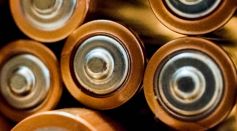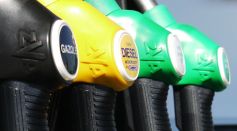CHEMISTRY

Cow Manure Turned Into Filter to Make Drinking Water from Seawater

Exploding Pants Set Farmers on Fire: What Caused This Unusual Plague in New Zealand During 1930s?

Molecules in Egg Carton Research Shows How Water Surfaces Produce Helpful Materials Like LED for Mobile Phones

Scientists Created Super Stable, Durable Glass by Mixing Multiple Molecules; Discovery Could Possibly Lead to New Types of Glasses

Particle Refinement Boosts Sodium/Lithium-Ion Batteries By Inducing and Increasing Cycle Capacity

Metal-Eating Bacteria Potential Solution to Keep Mining Clean in Chile

Can You Turn Seawater Into Fresh Water? New Ion-Removal Process Improves Conversion of Contaminated Water

Superconducting Single-Photon Detector Improved; Spectral Resolution Twice the Standard MKID

Biochemistry Researchers Identified How Organic Solar Cells Could Be More Efficient

Novel Way of Generating Renewable Biofuel Additives Could Use Radiation Derived From Nuclear Waste

Simulation for Improved Modern MRIs Conducted to Create Better and Safer Analysis of Patient's Anatomy

How Do Antibiotic-Resistant Germs Bring Toxins to Other Cells? Scientists Explain

University of Illinois Used Zeolite Pores to Develop Water Molecules and Its Fluidity as Catalyst for Faster Chemical Reactions

World's Whitest Paint Ever Reflects 98% Sunlight, Cools Buildings, Help Curb Global Warming
Most Popular

The Air Pollution Climate Link: What Environmental Science Reveals About Our Changing Planet

Solar vs Wind vs Hydro Energy: Which Renewable Energy Is Most Effective Power Source?

Carbon Footprint 101: What It Is and Simple Ways to Reduce Yours

Can EV Technology Compete in Motorsports? Inside the Electric Racing Future & EV Performance





